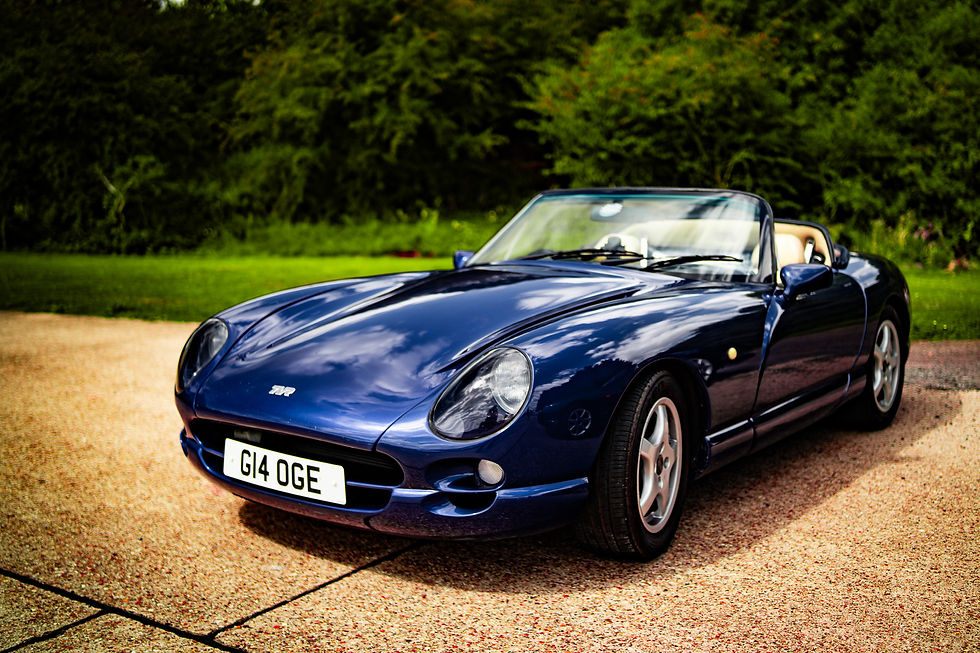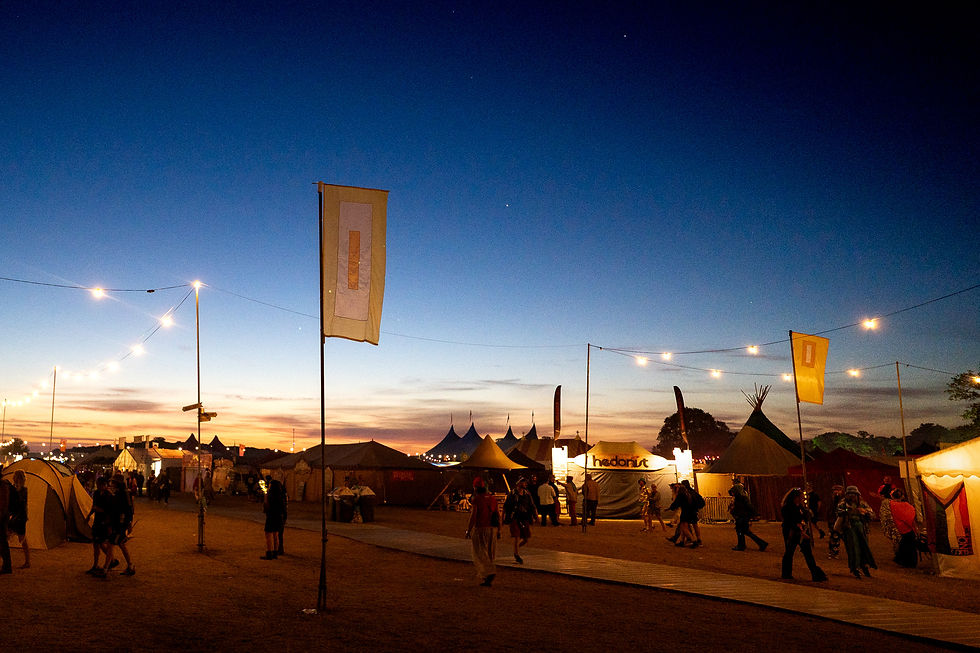Blog #13.5 - Prime Time, Long Glass, and Everything In Between – A (Pretend) Photographer’s Guide to Types of Camera Lenses
- Rich

- Aug 31
- 6 min read
I stood in the hobby room the other day, staring at the shelf of lenses like a man trying to pick a tie for a wedding he doesn’t really want to go to. Too many choices, not enough pockets. Do I take the 35mm and risk missing something far away? Do I strap on the 'moon bazooka' and risk looking like I’m setting up artillery? Or do I just shove my phone in my pocket and tell myself it will be fine?
That is the quiet madness of photography. Every lens changes how you see, and every lens leaves you with the creeping doubt that maybe you should have taken something else. For me, this whole debate has been bubbling up again because of the Weekly Prime project I am about to start. One prime lens, one photo, once a week. It feels like the right way to learn and slow down. Before diving in, I thought I would step back and look at the whole zoo of lens types, from primes to smartphones, with some honesty about what they are actually like to use.

Prime Lenses – Fixed but Freeing
Somehow, primes have become my go-to choice. I could not tell you exactly when it happened, but more often than not I find myself reaching for a fixed lens and leaving the zooms behind.
Part of it is sharpness, part of it is the wide apertures, but mostly it is that they make me subconsciously work. You do not zoom with your hand, you zoom with your legs. You have to move, reframe, commit.
The 35mm f/1.4 has been my regular choice recently, and it just seems to fit how I shoot. Wide enough for scenes, tight enough for detail, fast enough for low light. The 50mm f/1.8 is still the cheap little gem that can surprise me. The 85mm f/1.4 sits there daring me to use it more. And the 20mm f/1.8 keeps calling me back when I want to stretch the space.
Primes remind me why I am doing this in the first place. They force intentionality. They cut away the “what if I miss something” anxiety and make me focus on the frame I have. That is why they will be the backbone of Weekly Prime.

Zoom Lenses – The Swiss Army Knife
Zooms are the versatile, do-it-all tools that quietly keep photography going. They do not always get the glory, but they are the ones you pack when you do not know what you are walking into.
The Sony 24–240mm is my Swiss army knife. I would not call it my most-used lens, but when I do throw it on, it makes life easier. One minute you are wide for a landscape, the next you are zooming into something distant without changing lenses. It is not the sharpest and it is not the fastest, but it is flexible, and sometimes flexibility is exactly what you need.
Zooms are about peace of mind. They are for family days, holidays, or just when you do not feel like juggling glass in the middle of a muddy footpath. They might not make you feel like an artist, but they make sure you get the shot.
Telephoto & Super-Telephoto – Bringing the Far Closer
Now we are in long glass territory. The kind of lenses that make you feel like you are peering into another world.
The 300mm M42 is old-school manual focus. Good for slow movers, frustrating for everything else. The 420mm Temu special was a £30 experiment that somehow worked on the moon and nowhere else. But the real star is the Sony FE 200–600mm f/5.6–6.3 G OSS.
That is the lens that has turned into my weapon of choice for anything at a distance. Wildlife, sports, birds, the moon, even the odd landscape where compression makes the whole scene look dramatic. It is fast to lock on, stabilised, and genuinely impressive. Did I mention it is heavy?
It also happens to be white. For some reason, the posh lenses are always white, which must mean I have finally made it as a photographer. Nothing says serious business like standing in a field with a small bazooka painted in gloss ivory. Obviously.

Wide-Angle Lenses – More Than Just “Everything in One Shot”
Wide angles exaggerate the world. They pull you into a scene and make the foreground leap out.
The 20mm f/1.8 is my main tool here. Landscapes, interiors, even the odd attempt at night skies, it always feels like it is stretching the space and making me look at scenes differently. At Shambala Festival, it was the lens that made the sunrise feel as big as it was.
Wide angles are fun but unforgiving. Get too close and you distort, tilt the wrong way and lines bend. But when it works, it feels like you have bottled the atmosphere, not just the subject.

Ultra-Wide & Fisheye – Distortion as a Feature
I do not own one, but they deserve a mention. Ultra-wides and fisheyes exaggerate reality until it bends. They are loved in skate culture, live music, and street photography for that reason.
They are not for every day, but they are lenses that make the world look playful. Sometimes, distortion is the point.
Macro Lenses – The World at Your Feet
I do not have a dedicated macro lens, just a set of extension tubes that do the job well enough. Stick them on a prime and suddenly flowers, insects, and textures become whole new subjects.
It is fiddly, shallow depth of field becomes ridiculous, and even the faintest breeze can ruin the shot. I have even managed to somehow focus on a point before the lens, which I still do not fully understand. But when it does work, it is strangely satisfying.
Macro makes you look down, pay attention, and notice what you would normally walk past. Even with tubes, it is enough to make the small stuff feel epic.

Portrait Lenses – Flattering Glass
I do not really go out of my way to shoot intentional portraits the way a professional would, but certain focal lengths naturally flatter people. The 50mm and 85mm primes fall into that sweet spot where faces just look right.
I will occasionally use them for shots of Bow or family moments, but not with any grand setup. They are more about keeping things natural than staged.

Specialty & Oddball Lenses – Tilt-Shift, Mirror, Vintage
This is where photography starts to feel like tinkering. Tilt-shift lenses for architecture, mirror lenses for doughnut-shaped bokeh, and vintage glass for a bit of unpredictable fun.
I have ended up with a handful of old M42 lenses through bargain hunting, some brilliant, some frustrating. But that is half the charm. With older glass, the flaws become part of the photo. They stop you chasing perfection and let you enjoy the process.
Oddballs remind me that photography does not always need to be serious. Sometimes a weird, quirky lens is exactly what you need to shake yourself out of routine.

Smartphones – The Camera You Always Have
And then there is the phone. The pocket camera that quietly does more than most of us admit. Computational tricks, instant sharing, no bag required.
I have had moments where the phone shot was the one that mattered, on shift, in the garden, on holiday. It does not replace a camera, but it does not need to. It is the safety net, the tool for memories when the big gear is not there.
The Bigger Question – It Is About Seeing, Not Specs
What all of this comes down to is choice. Every lens type changes how you look at the world.
Primes teach discipline. Zooms give flexibility. Telephotos bring the distant close. Wides exaggerate. Macros reveal. Oddballs entertain. Smartphones keep you covered.
It is not about better or worse. It is about what you want from the moment.
Closing Reflection – Why I Am Choosing Prime (For Now)
That is why the Weekly Prime project makes sense for me. Not because primes are superior, but because they strip away choice and force me to commit. They are a way of slowing down, of focusing on one frame a week without the distraction of all the other options.
I will still use the 200–600 when I want reach, for sports, for animals, for distant subjects that only it can handle. I will still pack the zoom when I want flexibility, and I will still reach for the phone when that is all I have got. But for this project, primes will be the backbone.
By this time next year, I will have 52 photos to look back on, each one a small marker of what I noticed when I stopped overthinking and just used what was in front of me.
Maybe that is the real lesson. Not which lens is best, but that every lens is a way of seeing.





Comments